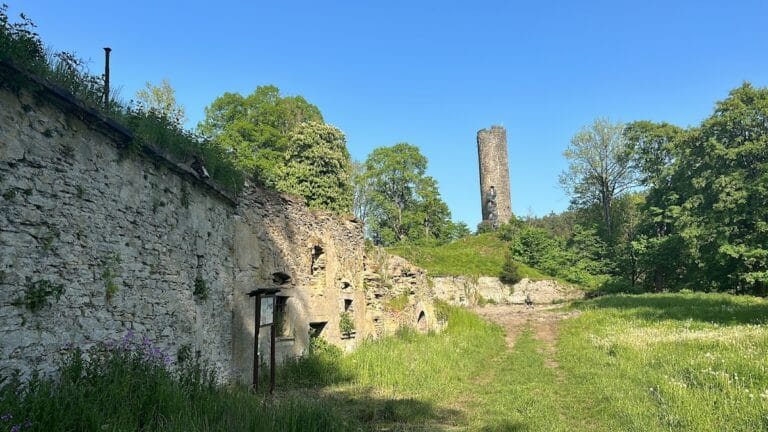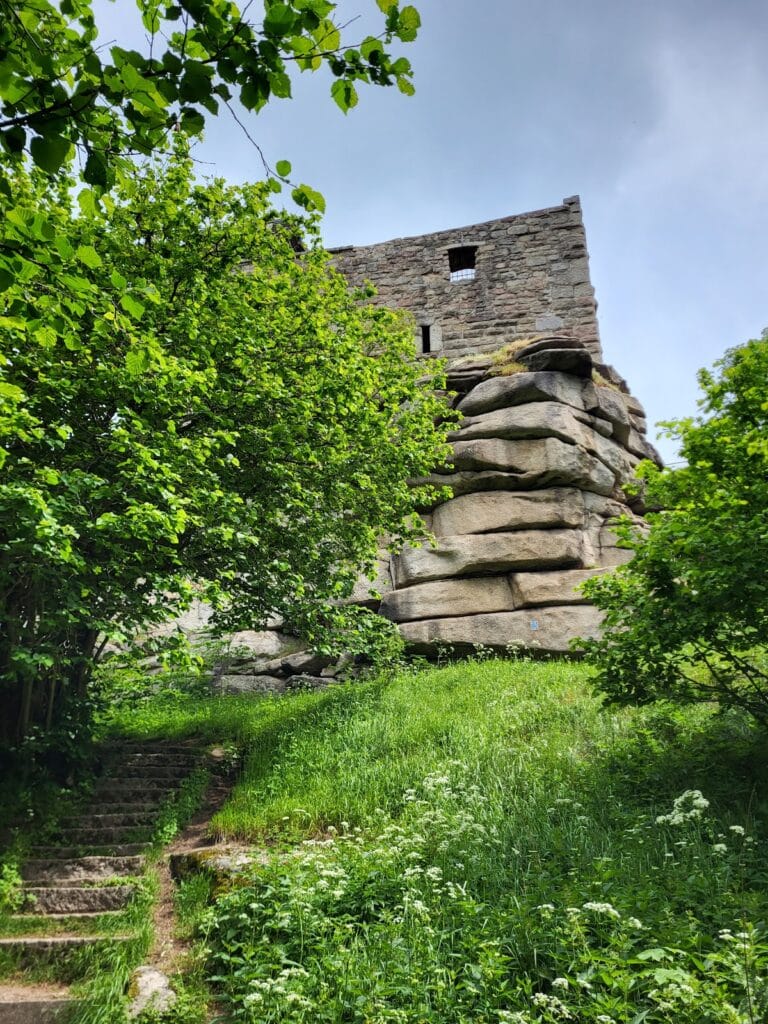Wiedersberg Castle: A Medieval Spur Castle in Triebel, Germany
Visitor Information
Google Rating: 4.4
Popularity: Low
Google Maps: View on Google Maps
Country: Germany
Civilization: Medieval European
Remains: Military
History
Wiedersberg Castle is situated in the municipality of Triebel, Germany. It was originally constructed around the year 1200 by medieval builders as a spur castle, a type of fortification built on a projecting ridge or spur of a hill, designed to control and protect important routes.
The earliest recorded mention of the castle dates to 1267, when a person named Reimboto de Widersberch was referenced, confirming its existence and noble association in the 13th century. During its early centuries, the castle served as the main residence of the Wiedersperger von Wiedersperg family, a baronial lineage. Alongside the castle, the family also managed an associated estate known as a Vorwerk in Troschenreuth, indicating their territorial influence in the region.
In the mid-14th century, the castle changed hands when Vogt Heinrich I of Plauen, a local administrator from the House of Reuß, acquired ownership. Later in 1357, control passed to the Wettin family, who were prominent rulers in the area and would remain influential for centuries. The castle was expanded after 1300, likely to strengthen its defenses and accommodate changing needs. However, by around 1500, the castle began to fall into decline and disrepair.
Although the fortress itself deteriorated, the site continued to be of local importance. In the 16th century, a new Renaissance-style manor was built lower in the valley beneath the castle hill, marking a shift from medieval fortification to more residential architecture reflective of the period’s changing tastes and social structures. In modern times, on March 12, 1973, the area around the castle was officially designated as a protected archaeological site, recognizing its historical value.
Remains
Wiedersberg Castle’s remains reveal the classical characteristics of a spur castle, designed to fit the natural contours of a west-facing ridge at approximately 490 meters above sea level. The fortress stood above the village of Wiedersberg, strategically overlooking the Feilebach stream and the road connecting the towns of Plauen and Hof, which it once guarded.
Among the surviving structures, a notably restored gate tower projects from the castle’s surrounding defensive wall. This tower features a distinctive passageway that turns sharply by 90 degrees within its bounds, a design meant to hinder attackers and control access. The enclosing walls themselves are preserved in sections on the castle’s west, south, and north sides. The north face oriented toward the Plauen-Hof road, reinforcing the castle’s role in securing this key route. Inside, several vaulted cellars remain, some of which have been re-roofed to protect them from the elements and preserve their condition.
A remarkable defensive feature is the double neck ditch—two moats or trenches cut directly into the rock—to the castle’s approach. These ditches provided an additional obstacle to assailants, taking advantage of natural rock formations to enhance security. Archaeological finds at the site, including artifacts and structural elements, date from as early as the 12th century through to the 15th century, underscoring the castle’s active use during the medieval period.
While detailed descriptions of building materials and decorative aspects are not documented, the existing ruins and restoration efforts offer a glimpse into the castle’s original layout and defensive design adapted to its hillside setting. Today, the site stands as a fragmentary yet tangible connection to the region’s medieval past.







